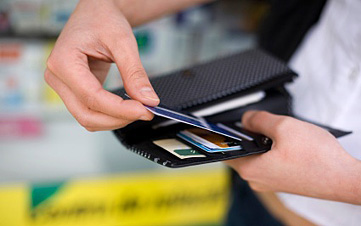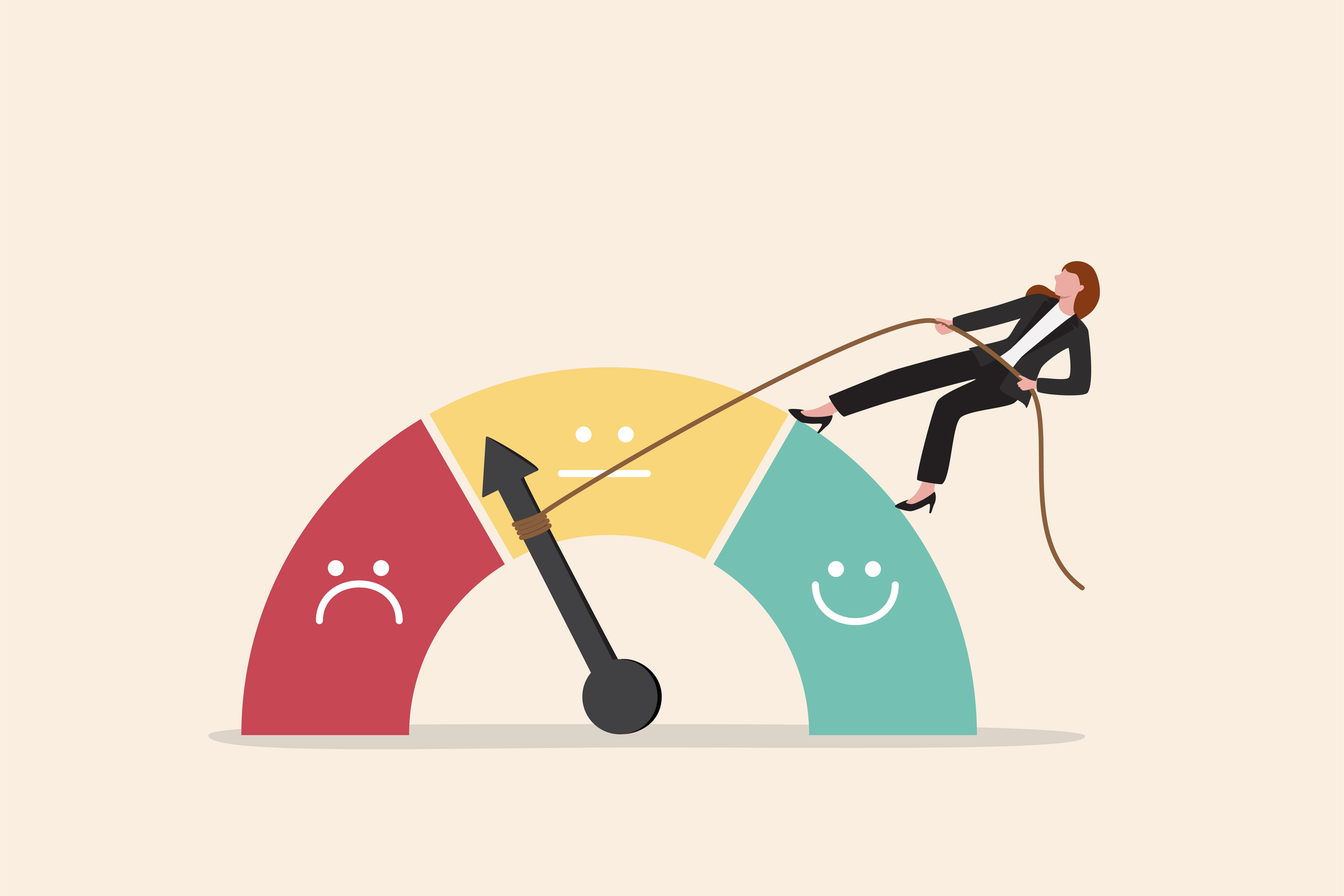11 Credit Card Mistakes to Avoid
Whether due to confusion or carelessness, credit card mistakes are all too common.


Whether due to confusion or carelessness, credit card mistakes are all too common. The fallout can be costly, no matter what the cause. Even a single slip-up can result in higher interest rates, lower credit limits, unwanted fees or dings to a credit score.
New rules put in place by the Credit CARD Act of 2009 and the Dodd-Frank Act of 2010 help, as does the formation of the Consumer Financial Protection Bureau, which monitors the credit-card industry. But ultimately it’s up to you to use credit wisely.
Take a look at 11 of the most common credit card mistakes and learn how to avoid making them.

Paying Bills Late
Late payments are the “biggest foul” when it comes to credit cards, warns Ben Woolsey, director of marketing and consumer research at CreditCards.com. The consequences can include late fees, jacked-up interest rates and a lower credit score.
Take Chase Bank’s Sapphire card, for example, which has a current annual percentage rate of 13.24%. If you make a late payment, the APR could jump to 29.99%. Plus, you’ll be hit with a late fee of up to $35. If you miss two or more consecutive payment dates, the late fee can soar to 3% of the outstanding balance.
Late payments, especially those more than 30 days overdue, can hurt your credit score. Payment history accounts for 35% of a FICO score, the most common credit score, which ranges from 300 to 850. A single 30-days-late payment can drop your score by 60 to 110 points, according to CreditCards.com.
The lesson: Pay your bills on time, every time. The CARD Act requires banks to mail your statement at least 21 days before the due date. Mark your calendar, and allow enough time for postal delivery. Or better yet, pay bills online.

Bungling Balance Transfers
Moving debt from a high-interest-rate card to one with a low introductory rate can make financial sense--but only if you read the fine print. If you ignore or misunderstand balance-transfer rules, you could end up owing even more.
Start by determining exactly how long the introductory offer lasts. Then ask yourself whether you have the discipline and means to pay off the debt before the APR goes up. Otherwise, you could find yourself eventually paying a higher interest rate.
Next, check whether an introductory offer entails a transfer fee. “Very few cards offer a truly free transfer anymore,” says Woolsey. Fees, which don’t have a cap, currently range between 3% and 5% of the amount transferred.
Even with a fee, a balance transfer can be beneficial. Let’s say you move $5,000 from a credit card charging 14% interest to a card with a 0% APR for 12 months and a 4% fee. The transfer fee would add up to $200. In contrast, paying a fixed rate of $120 a month on your old card would cost you about $650 in interest over those same 12 months.

Making Minimum Payments
Most of us know that we should pay more than the monthly minimum on a credit card bill, but it’s all too easy to put that extra $50 toward dinner or shopping instead. After all, what difference would a few bucks a month make anyway? The answer: a huge difference.
If you have a balance of $5,000 with an APR of 14%, and you only pay the minimum of $100, it will take 22 years to pay off the debt in full, according to a Federal Reserve credit card calculator. You’ll also hand over $6,110 in interest. Boost your monthly payment to $150, however, and you’ll be debt-free in four years and pay $1,369 in interest.
Thanks to the CARD Act, you don’t have to do the math yourself. Your monthly statement now includes information on how long it will take to pay off your balance by only making minimum payments, as well as how much you would need to pay to erase your debt in three years.

Using Up All Available Credit
No matter how many cards you hold, keep an eye on your credit utilization ratio, or the proportion of your total available credit used each month. You may want to apply for another card if you are using up a big chunk of your available credit, even if you aren’t close to maxing out your limits. In general, Kiplinger recommends spending no more than 30% of your revolving credit card limits.
The total amount of your available credit that you access can have a big impact on your credit score. While new credit determines 10% of your FICO score, amounts owed determines 30%.
For example, if you have two cards, each with a $1,000 limit, you have $2,000 in total available credit. That means you can charge $600 between the two cards, while still keeping your credit utilization ratio at 30%. If you spend that same amount but only have one credit card with a $1,000 limit, then you will have used 60% of your available credit.
Be sure to use all of your cards periodically. If a card is inactive for a long period, the lender may close the account. That could result in an unexpected jump in your credit utilization ratio, which could drag down your credit rating.

Ignoring Monthly Statements
This may be the easiest pitfall to avoid. As soon as you receive your monthly credit card statement, take a few minutes to look it over. Mistakes happen, so be sure there are no erroneous charges. The sudden appearance of unfamiliar charges can also signal identity theft. Call your lender immediately to report discrepancies.
Reading your bill can also help you understand how long it will take to pay off your debt. As mentioned earlier, the length of time required to retire your balance by making minimum payments is displayed, as is how much you would need to pay each month in order to pay off your balance in three years. These numbers could act as a wake-up call for you to increase your monthly payments.
Also, pay attention to the various interest rates you pay on purchases, cash advances and such. Look for changes from the previous month. Lenders are now required to give 45 days’ notice before hiking rates. And it never hurts to double-check the due date of your bill to avoid late fees.

Racking Up Foreign Transaction Fees
There’s no surer way to ruin a trip abroad than coming home to a credit card statement chock full of foreign transaction fees. A majority of bank-issued credit cards tack on this fee, which often runs as high as 3%, including the 1% that Visa and MasterCard charge on foreign transactions.
It is possible to dodge some foreign transaction fees. Capitol One, for example, waives the fee completely. Other issuers waive foreign transaction fees for certain cards, such as CitiBank’s Thankyou Premier card, PenFed\'s Premium Travel Rewards American Express card and Chase Bank’s Sapphire card.
Because foreign transaction fees vary by credit card, it pays to contact each issuer to find the one that charges the lowest fee. Use that card for purchases while abroad. Note: Many banks also charge for foreign debit transactions and ATM withdrawals, so check on those fees too.
SEE ALSO: How to Avoid Credit Card Problems When Traveling

Taking Cash Advances
Unless it is an emergency, do not use your credit card to get a cash advance. If you do, you’ll incur sky-high interest charges and probably pay an upfront fee for the privilege. Adding insult to injury, there’s no grace period before interest starts accruing.
For example, if you take out $1,000 with your Citibank Platinum Select credit card, you will be hit with a $50 fee. The APR, which starts being tallied immediately, will be 25.24%, five percentage points more than the highest rate for purchases. Even if you pay back the advance within one month, you will owe $21 in interest on top of the $50 fee.
The longer you take to repay a cash advance, the worse the blow to your wallet. Wait a year to pay off that $1,000, and you will owe more than $250 in interest on top of the original $50 fee. If at all possible, explore other ways to get extra cash before resorting to a cash advance.

Spending to Earn Rewards
It’s easy to get sucked in by credit cards that offer “free” rewards, such as cash back or airline tickets. But guess what: Free rewards aren’t free. To earn rewards you need to spend money, and the promise of rewards can lead you to spend more than you otherwise would--and perhaps more than you can afford.
In general, any reward you earn on a credit card will be worth 1% of the amount you spent to qualify for the reward. In comparison, the average APR right now is about 14%. “Rewards never offset interest charges, unless you’re in a promotional period,” says Woolsey.
Pay careful attention to the fine print on cash-back promises. Credit cards that tout 5% cash back on purchases “almost always” operate on a tiered-spending structure, warns Woolsey. People who charge little every month might fall into the lowest tier, meaning they might earn just 1% cash back. You’ll need to spend much more, and keep spending much more, to qualify for the full 5%.

Paying Excessive Annual Fees
Avoid annual fees whenever possible. Banks typically charge these fees for one of three reasons: A credit card offers a rewards program such as cash back or free travel; a card grants access to premium services such as advance ticket purchases; or a cardholder is deemed a risky borrower due to a low credit score or limited credit history.
The latter is a sticky situation, but you can shop around for lower fees as you build (or rebuild) your credit by paying bills on time and limiting the amount of new debt you take on. The first two reasons are a matter of choice. If premium services are worth the price tag to you, then by all means pay for the privilege. But if it is rewards points you’re after, be sure the value of the reward surpasses the annual fee every year.
Take the American Express Premier Rewards Gold card, for example. The annual fee is $175. If you charge more than $30,000 a year, you automatically receive 15,000 bonus points--the equivalent of $150--which can be redeemed for gift cards, travel and other rewards. You also earn a point for every dollar charged (two points per dollar for gas and groceries). In this scenario, you’ll easily recoup the annual fee. You might not, though, if you don’t collect the 15,000 bonus points.
Annual fees vary by issuer, but the CARD Act caps fees at 25% of the initial credit limit. If you have, say, a limit of $500, then fees for the first year can’t exceed $125. If you are unsure why you’re being told to pay this annual charge, just ask. Banks now are required to tell you.

Chasing Teaser Rates
Before you jump at the chance to sign up for a credit card with a 0% introductory APR, make sure you understand how long the promotional period lasts and how high your rate will climb after the offer expires. While the CARD Act requires introductory rates to last at least six months, companies do not have to notify you when an offer ends.
Some introductory APRs are good for up to 21 months, but most last closer to a year. Pay bills on time every month to prevent lenders from raising rates early, and pay balances in full before rates reset to avoid interest charges. Heed any restrictions on balance transfers. Some banks exclude transfers from 0% APR offers, whiles others shorten the promotional period.
Weigh the impact of repeatedly tapping promotional offers on your credit score. Too many open lines of credit, as well as too many recently opened accounts, can lower your score. At the same time, if you constantly close old accounts and open new ones to take advantage of promotional offers, you’re signaling to credit-reporting agencies that you can’t keep an account open and in good standing for a long period of time.

Neglecting Credit Scores
The best way to pay less on your credit cards, other than keeping them in the freezer, is to improve your credit score. But if you don’t understand how your score is calculated or you fail to pay attention to your score at all, that can be very hard to do.
A FICO score is the most common credit score, although there are others such as VantageScore.
Five major factors go into a FICO score: payment history (35%), amounts owed (30%), length of credit history (15%), new credit (10%) and types of credit used (10%). All it takes is a poor showing in one of these categories and your score can drop.
Let’s say you have a long credit history and always pay your bills on time, but you typically spend 90% of your available credit limit. That percentage, or credit utilization ratio, can drag down the “amounts owed” portion of your FICO score because it signals to lenders that you’re a risky borrower. Use closer to 30% of your available credit and you can raise your score because you’re telling lenders you have your spending under control.
If you are denied credit or charged a higher interest rate due to your credit score, lenders now are required to provide you with a copy of your score at no cost. You should also request a free copy of your credit report every 12 months at AnnualCreditReport.com. Report any errors to the appropriate credit-reporting agencies.
SEE ALSO: How to Get Your Credit Score for Free

More from Kiplinger
- FAQs: New Credit Card Rules
- SLIDE SHOW: 7 Little-Known Credit Card Perks
- QUIZ: Do You Know the Score on Your Credit?
- Best of the Rewards Cards
- SLIDE SHOW: 11 More Ways to Get Extra Cash
Get Kiplinger Today newsletter — free
Profit and prosper with the best of Kiplinger's advice on investing, taxes, retirement, personal finance and much more. Delivered daily. Enter your email in the box and click Sign Me Up.

-
 Should You Do A Roth IRA Conversion? Nine Things to Consider
Should You Do A Roth IRA Conversion? Nine Things to ConsiderThe Tax Letter Thinking of converting a traditional IRA to a Roth IRA? The Kiplinger Tax Letter Editor highlights nine factors you should consider before making a move.
By Joy Taylor
-
 33 Stocks That Could Rally 50% or More This Year
33 Stocks That Could Rally 50% or More This YearAnalysts say these S&P 500 stocks have at least 50% price upside over the next year or so.
By Dan Burrows
-
 What to Do With Your Tax Refund: 6 Ways to Bring Growth
What to Do With Your Tax Refund: 6 Ways to Bring GrowthUse your 2024 tax refund to boost short-term or long-term financial goals by putting it in one of these six places.
By Rachael Green
-
 What Does Medicare Not Cover? Eight Things You Should Know
What Does Medicare Not Cover? Eight Things You Should KnowHealthy Living on a Budget Medicare Part A and Part B leave gaps in your healthcare coverage. But Medicare Advantage has problems, too.
By Donna LeValley
-
 15 Reasons You'll Regret an RV in Retirement
15 Reasons You'll Regret an RV in RetirementMaking Your Money Last Here's why you might regret an RV in retirement. RV-savvy retirees talk about the downsides of spending retirement in a motorhome, travel trailer, fifth wheel or other recreational vehicle.
By Bob Niedt
-
 The Six Best Places to Retire in New England
The Six Best Places to Retire in New Englandplaces to live Thinking about a move to New England for retirement? Here are the best places to land for quality of life, affordability and other criteria.
By Stacy Rapacon
-
 The 10 Cheapest Countries to Visit
The 10 Cheapest Countries to VisitWe find the 10 cheapest countries to visit around the world. Forget inflation woes, and set your sights on your next vacation.
By Quincy Williamson
-
 15 Ways to Prepare Your Home for Winter
15 Ways to Prepare Your Home for Winterhome There are many ways to prepare your home for winter, which will help keep you safe and warm and save on housing and utility costs.
By Donna LeValley
-
 Six Steps to Get Lower Car Insurance Rates
Six Steps to Get Lower Car Insurance Ratesinsurance Shopping around for auto insurance may not be your idea of fun, but comparing prices for a new policy every few years — or even more often — can pay off big.
By Donna LeValley
-
 How to Increase Credit Scores — Fast
How to Increase Credit Scores — FastHow to increase credit scores quickly, starting with paying down your credit card debt.
By Lisa Gerstner
